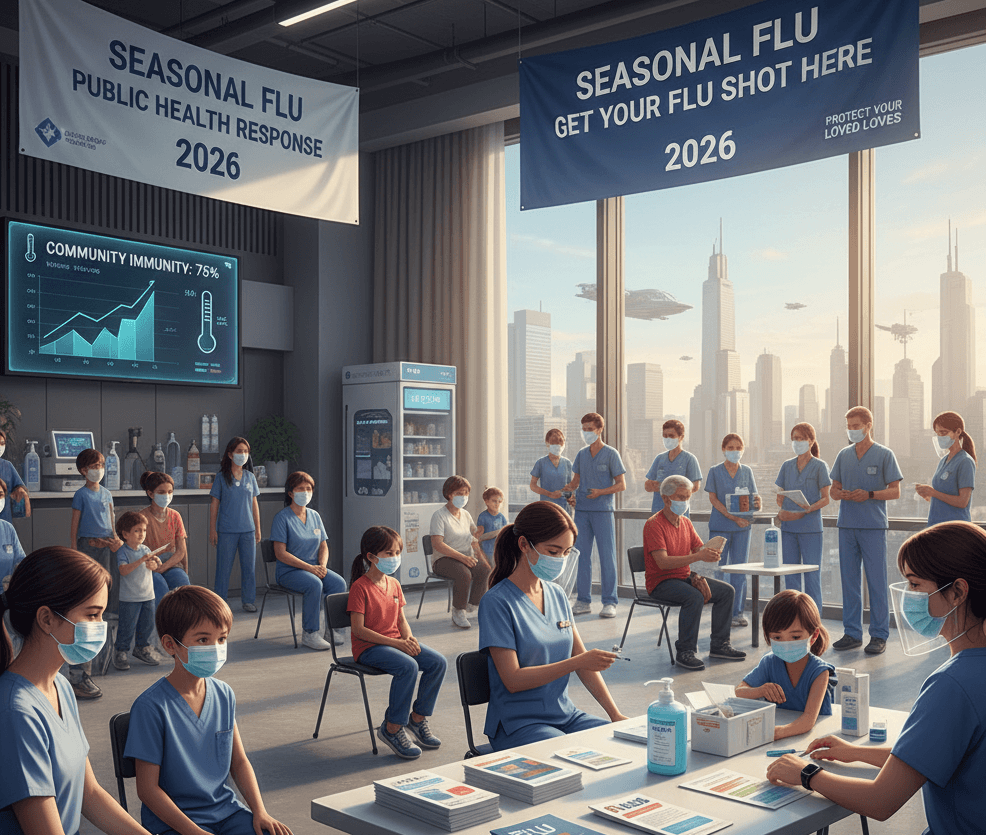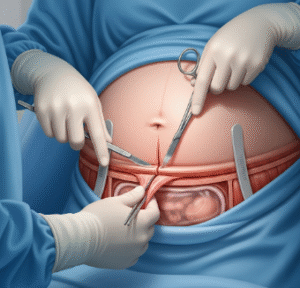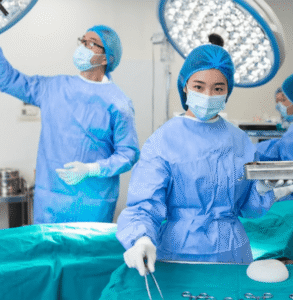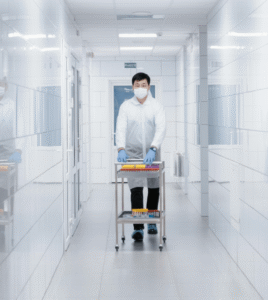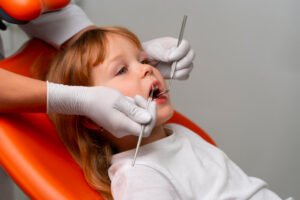Seasonal influenza continues to be a major public health concern in Korea, especially during the colder months. While vaccines and antiviral treatments are widely available, the 2026 flu season brings new challenges and strategies that reflect Korea’s evolving approach to disease prevention and management.
The Korean government, led by the Korea Disease Control and Prevention Agency (KDCA), is implementing updated vaccination programs, stronger surveillance systems, and more targeted public education campaigns to minimize the impact of the flu. Here’s a detailed look at how the country is responding to seasonal influenza in 2026 and what Korean citizens should know.
Recent Trends and Lessons Learned
Over the past few years, Korea has experienced fluctuations in the intensity and duration of flu seasons. The 2024–2025 season was particularly severe, with higher-than-usual infection rates among older adults and children. The extended circulation of influenza B viruses highlighted the importance of flexibility in vaccine composition and public health planning.
The pandemic experience has also shaped how Korea prepares for flu seasons. Citizens are now more aware of infection control, mask-wearing, and vaccination. However, experts caution against complacency as influenza continues to mutate and cause complications, especially in high-risk populations.
The 2025–2026 Vaccination Program
For the 2025–2026 flu season, the KDCA launched its national vaccination program in late September and extended it through April 2026. The program emphasizes free vaccinations for children, pregnant women, and adults aged 65 and older, while encouraging the rest of the population to get vaccinated through local clinics and pharmacies.
The major change this year is the transition from a quadrivalent vaccine (which covered four strains) to a trivalent vaccine that no longer includes the B(Yamagata) strain, as it has not circulated globally for several years. Health officials assure that protection remains robust, and the change allows resources to be used more efficiently.
The vaccination rollout occurs in phases to manage clinic demand and ensure high-risk populations are prioritized.
- ❂ Late September: Vaccination begins for children needing two doses.
- ❂ Early October: Starts for pregnant women and children requiring a single dose.
- ❂ Mid-October: Expanded to seniors, beginning with those aged 75 and older.
Elderly individuals are encouraged to receive their flu shot and COVID-19 booster together to save time and improve protection against respiratory illnesses.
Surveillance and Early Warning Systems
Korea operates one of the world’s most advanced influenza surveillance systems. The Influenza-Like Illness (ILI) monitoring program tracks cases nationwide, collecting data from hospitals, clinics, and diagnostic labs. Weekly reports provide updates on the number of suspected flu patients, hospitalization rates, and circulating virus types.
If cases rise above a set threshold, the KDCA issues a national influenza alert, prompting hospitals and schools to strengthen hygiene protocols. In the previous flu season, such alerts helped reduce hospital overcrowding and guided regional responses.
These surveillance systems are supported by local health centers that monitor vaccination rates, medicine supplies, and community outbreaks. Real-time data allows for faster decision-making and early intervention, preventing local epidemics from spreading.
Public Awareness and Hygiene Campaigns
Public education remains central to Korea’s flu prevention efforts. The government continues to promote simple but effective hygiene habits: regular handwashing, mask use in crowded areas, covering coughs, and avoiding contact with vulnerable individuals when sick.
Television, online platforms, and social media campaigns remind citizens to get vaccinated and recognize flu symptoms early. Educational materials in schools and workplaces emphasize self-care, rest, and proper medication use, aiming to reduce unnecessary hospital visits.
- ⚪ Schools are encouraged to monitor student health closely and report clusters of flu-like illness.
- ⚪ Workplaces are advised to adopt flexible sick leave policies during peak flu months.
- ⚪ Pharmacies and clinics display updated flu guidance for local communities.
Hospital Readiness and Response
Hospitals across the country have strengthened triage systems to manage surges in flu patients while preventing cross-infection. Many facilities now have separate areas for patients with respiratory symptoms.
Stockpiles of antiviral medications are in place, and healthcare staff are trained to handle overlapping flu and COVID-19 cases. The government also ensures that cold chain systems — essential for vaccine storage and transport — remain fully operational throughout the campaign.
Medical personnel are encouraged to receive their annual flu shots early, setting an example for the public and maintaining healthcare workforce resilience.
Research and Vaccine Development
Korea continues to invest heavily in vaccine research and manufacturing. Domestic companies are collaborating with research institutes to develop next-generation flu vaccines, including mRNA-based and universal influenza vaccines that could provide longer-lasting protection.
Pilot programs are also exploring AI-driven modeling systems to predict outbreak timing and optimize vaccine distribution. These technological advances aim to strengthen Korea’s self-sufficiency and speed in responding to both seasonal and pandemic influenza threats.
Addressing Public Concerns and Challenges
While the national vaccination program has strong participation, challenges remain. Some citizens question the move to trivalent vaccines, while others underestimate the seriousness of influenza. Public health experts stress that even mild flu seasons can cause complications such as pneumonia, especially in the elderly or chronically ill.
Another issue is ensuring vaccine access for rural and underserved populations. The government has deployed mobile vaccination teams and outreach clinics to remote areas to bridge this gap. Ongoing communication is essential to maintain trust, especially when adjusting vaccination strategies.
What Citizens Should Do
To stay healthy during the 2026 flu season, Korean citizens are advised to:
- ❂ Get vaccinated as early as possible, ideally before peak season (November to January).
- ❂ Wash hands frequently and wear masks in crowded public places.
- ❂ Avoid visiting hospitals unless necessary to reduce exposure risks.
- ❂ Stay home if you have symptoms such as fever, sore throat, or body aches.
- ❂ Encourage family members, especially children and seniors, to get vaccinated.
- ❂ Keep up with updates from local health authorities and community clinics.
Those at high risk — including seniors, pregnant women, and people with chronic conditions — should consult their doctors early about preventive care and antiviral options.
Looking Ahead
The 2026 public health strategy reflects Korea’s maturity in managing infectious diseases. The integration of vaccination, digital surveillance, and communication ensures a comprehensive approach to reducing flu-related hospitalizations and fatalities.
Future goals include expanding the use of smart health platforms that remind citizens about vaccine appointments, strengthening domestic vaccine supply chains, and improving cross-border cooperation on virus monitoring.
Final Thoughts
Korea’s public health response to seasonal flu in 2026 shows the country’s commitment to prevention, preparedness, and public trust. By combining vaccination, technology, and clear communication, health authorities aim to protect citizens and minimize disruption during flu season.
The success of this approach depends not only on government systems but also on citizen participation. Vaccination, hygiene, and responsible health behavior remain the strongest defenses against seasonal influenza.

